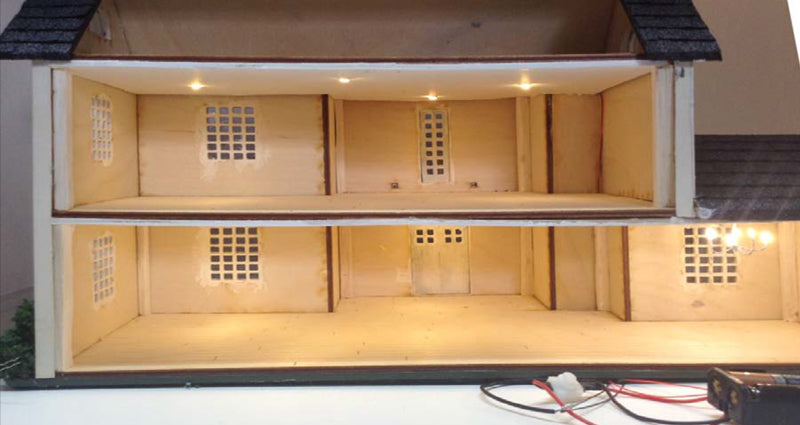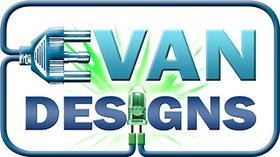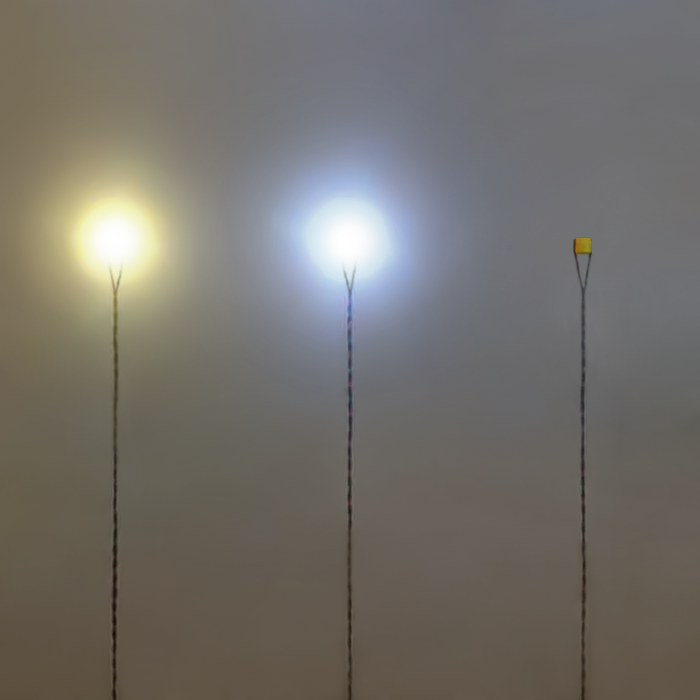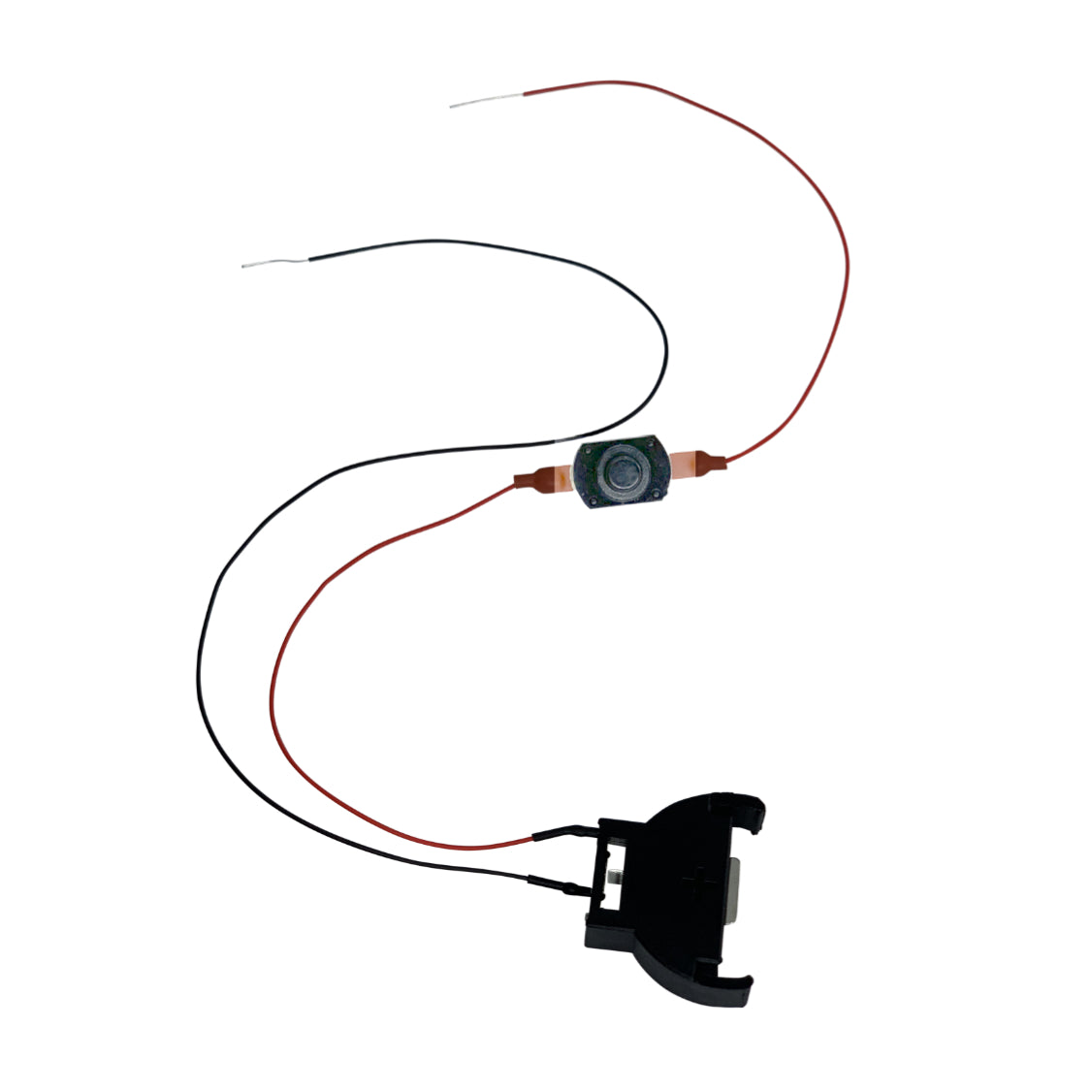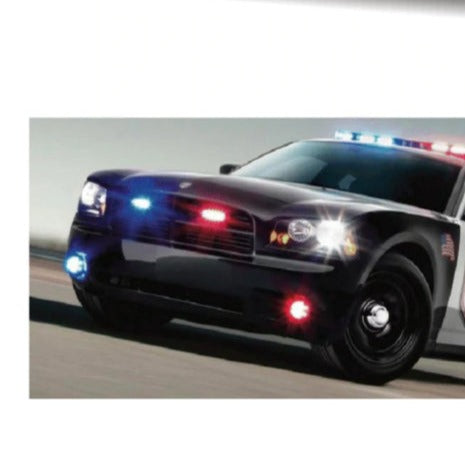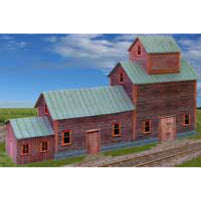How to install LEDs

Adding LEDs to Miniatures
There are a lot of ways to add LEDs to any project. With the big difference lights can make it is definitely worthwhile to add them! To get started thinking about LEDs, it is good to know a few basic facts about these great lights.
LEDs are made run on either battery or wall adapter. You can pick how or what you want to use! The miniature hobby LEDs draw so little power; you can run them on tiny batteries for a long time. The nickel sized coin cell can run up to 10 LEDs of any size, shape or color for up to 4 hours continuous operation. The coin cell can run solid or flashing / flickering LEDs but it cannot run both or the solid LEDs may slightly flicker.
Moving up in size, a pair of AAA can run 50 LEDs of any size or color. The AAA can run solid LEDs along with any flash or flicker LEDs all together with no carryover. There is also no carryover with AA or 9 volt batteries. If you are going to use a wall plug, be sure to use one that states it is compatible with LEDs! LEDs come in many sizes. The most commonly used sizes in minis LED lights are :

5mm, 3mm, 1.8mm | Chip, Nano, Pico

Each size has its use in modern doll house lighting. The bigger bulbs are great for overall room lights, while the smallest sizes can be used in lamps or chandeliers or even candles. Remember, LEDs never get hot, so you can leave the lights on, forever.
For our project we are lighting a 2 story Colonial. We choose warm white because it is a nice color for the era of this house. We used a “false ceiling” to put in the lights, run the wires and make the connection to hook up wire. First, we cut a piece of Bristol board the same size and shape as the first floor ceiling. We drilled holes through our Bristol board for each light we wanted to place on the first floor. We wanted a light in the entry way, and a nice fancier light for the dining area too.
We chose 3mm LEDs for a nice bright interior recessed style lighting. We sanded the rounded top off each LED, then we poked the LEDs through the Bristol board holes and bent the LED legs flat to the side. We then taped each LED down so they would not shift during installation. Remember, LEDs never get hot!
With the LEDs arranged how we liked, we cut and stripped their wires in order to gather them together neatly. We attached all of the LEDs for the first floor to a single red and black hook up wire. All of your Red wires go to red wire on your hook up wire and all of the black wires go to the black.


For the first floor dining area, we also made a chandelier using 5 of the warm white Nanos. We twisted the nano wires and painted them silver. Nice chandelier! Lamps can also be made with nanos or even picos.
These 5 nano’s wires are gathered with the other wires and connected right to that same single pair of hook up wire. You will want to twist your wires very firmly at each hook up connection. Make sure they are firmly connected , use shrink tube to protect connections. Now is a good time to test all of the LEDs, make sure they all light. In the rare case of an LED not lighting, it is usually a connection problem. So now, before everything is glued in, it is a good time to test the lights.
The two hook up wires are then trailed out a corner of the board and left to dangle while the board is inserted into the ceiling. Next, we drill a hole in the bottom corner of the front room, to pass the hook up wire out along the corner of the wall and out of the house to where the AAA battery will eventually be hidden.

On to the second floor! We again cut a Bristol board the same size and shape as our ceiling. Drilled holes, inserted our sanded and bent 3mm warm white LEDs. Tape them down. Cut the wires to the same length and connect to your pieces of red and black hook up wire twist your wires firmly. Dangle the hook up wire over the edge of the board when you are inserting the 2 nd floor false ceiling. These 2 wires will go down the back corner of the upstairs room, down through the first floor and on out through the floor to our AAA battery.
In the bottom picture, you may just be able to see the 2 hook up wires from the second floor in the corner of the room. These will be covered later with wall paper. If your paper is already in place, you can just paint the wires a complimentary color to your wallpaper.
They are small and likely to blend in without too much work. Now we have the lights in place, the AAA battery holder will be hidden underneath the house in a false bottom. This allows for each access to the on/off switch and eventually changing the batteries. This many lights will run about 30 hours continuously on our AAA battery!
